Discover Beyond Charminar
Beyond Charminar

Beyond Charminar
Author: Suno India
Subscribed: 59Played: 536Subscribe
Share
© 2025 Suno India
Description
Picnic in Golconda fort, shopping in Charminar- just some of the many memories that every child growing up in Hyderabad makes. With grandiose forts & majestic monuments, these historical places are just some of the few symbols of Hyderabad. But even with 428 years of history, why is Hyderabad's rich history often ignored in textbooks? Why is there apathy and little interest in protecting these structures and the culture around it?
Beyond Charminar is our ode to this city. History aficionado and pucca Hyderabadi at heart Yunus Lasania, aka “That Hyderabadi Boy” will bring-to-you incredible stories of Hyderabad history and it’s rich multi-cultural heritage.
Beyond Charminar is our ode to this city. History aficionado and pucca Hyderabadi at heart Yunus Lasania, aka “That Hyderabadi Boy” will bring-to-you incredible stories of Hyderabad history and it’s rich multi-cultural heritage.
40 Episodes
Reverse
One of the biggest enigmas of Hyderabad's heritage are the famed Nizams jewels, a portion of which are with the Reserve Bank of India.
The collection, which includes the infamous 186 carat Jacob diamond, is always a topic when we talk about the Nizams of Hyderabad.
To understand how big the entire collection is, and the stories surrounding it, host Yunus Lasania speaks with art historian Deepthi Sasidharan is an art historian.
Deepthi is also a curator and founder Director at Eka Archiving, a cultural advisory and works on heritage and museum projects across India with the government, private and corporate clients.
Deepthi, has led Eka projects have been path-breaking in India, including setting up museums, seminal exhibitions, and the creation of several important archives across India. This past year she curated the celebratory AD Museum – Design in 75 years and curated the Dr. Savita N Museum and Library at Porbandar, Gujarat.See sunoindia.in/privacy-policy for privacy information.
Language is a means of communication, which often is shaped (or changes) based on our socio-cultural and political milieu. In India's Deccan region, the spoken language (widely) today is in fact Dakhni, and not Urdu. The former, often mistaken to be a dialect of Urdu, is actually older and was at one point of time the mainstay of literary culture in the 16th and 17th centuries, especially in the Deccan.In spite of Urdu eventually becoming the official language over a century ago, Dakhni has still persisted and remained as our spoken tongue. To decode that host Yunus Lasania speaks with researcher and upcoming author Karthik Malli, and also Mohd Affan aka Pasha Bhai, a Bangalore-based hip-hop artist who released his maiden and the first ever Dakhni rap album 'Pasha Bhai'. Affan had earlier released a few singles, but his latest album, which is chosen to sing in Dakhni, is a must listen for anyone looking to understand language dynamics.See sunoindia.in/privacy-policy for privacy information.
Most of us today know of software giant TCS (Tata Consultancy Services). It's part of Hyderabad's Hitec City that emerged in the 21st century. However, many aren't aware that TCS in fact was originally a government Public Sector Unit called CMC (Computer Maintenance Corporation) that came up after IBM was asked to leave India. IBM used to maintain PCs and databases in India and when IBM was asked to leave, the government hired individuals who would set up an alternative.Among those who were hired was BK Gupta, who was one of the founding employees of the CMC, India's first software company, which he helped set up in Hyderabad. Host Yunus Lasania speaks with Mr Gupta for this episode, whose eventful journey also includes a ship journey from India to the UK at a very young age for his studies. See sunoindia.in/privacy-policy for privacy information.
Off-late, the word Razakaars is being thrown around in political circles quite often in Telangana. Referring to the militia under ex-MIM Leader Qasim Razvi in the Hyderabad state during its last Nizam, the Razakars have once resurfaced in the state's politics. The Hyderabad state, under its last Nizam Osman Ali Khan (1911-48), became part of India on Sept 17, 1948, more than a year after the British left. What happened in the last two years before that is needed to understand the Razakars, the Nizam and the annexation. Rakesh Kamal, Co-founder of Suno India, speaks with host Yunus Lasania to unravel the entire saga of the Hyderabad state in 1948. See sunoindia.in/privacy-policy for privacy information.
When it comes to our freedom struggle from the British, one doesn't think of Hyderabad. More importantly, we're seldom taught about how the 'Jai Hind' slogan came about.Abid Hasan Safrani, a Hyderabadi, was one of those rare individuals who had gone to Germany to study in the 20th century before independence.A chance encounter with Netaji Subhash Chandra Bose eventually ended up with him undertaking a submarine journey with Bose as an Indian National Army personnel.How that went and how Abid Hasan Safrani came back is perhaps one of the most important stories from Hyderabad of the freedom struggle.For this episode of Beyond Charminar, host Yunus Lasania speaks with sisters Dr Ismat Mehdi and Bizeth Banerjee, both nieces of Safrani, about his life, INA and the freedom struggle from a different perspective. See sunoindia.in/privacy-policy for privacy information.
2022 July marks the 175th anniversary of the Seth Viccaji - Seth Pestonji Meherji Parsi (Zoroastrian) fire temple in Hyderabad. Founded by the two brothers in 1847, it's also the oldest fire temple in south India.Once bankers under the Nizams of Hyderabad, the brothers built the temple and set up infrastructure for cotton traders in the 19th century. More importantly, descendants of Seth Pestonji eventually ended up setting up Chermas, one of the largest retail clothing business in the country, in Hyderabad.For this episode, host Yunus Lasania speaks to Capt KF Pestonji, who founded Chermas in the 1970s, to understand Parsi history in Hyderabad.See sunoindia.in/privacy-policy for privacy information.
Over the last few decades, the Bhagyalakshmi temple on the Charminar, which is Hyderabad's foundation, has become a matter of heated debate given the fact that the religious structure is an unauthorised structure. Today, the temple has taken centre stage as it has now become a focal point for mainstream political parties to begin their programmes from. However, in terms of history, there is ambiguity about its origins, and many theories are afloat about it.
To address that, host Yunus Lasania speaks with Oudesh Rani Bawa, a Hyderabadi from a Kayasth family, who has been seeing both Charminar and the temple since her childhood. Ms Bawa, 81, is an Urdu aficionado, and someone who has been deeply involved in the city's socio-political happenings. See sunoindia.in/privacy-policy for privacy information.
For many, the demand for a separate state of Telangana was something new when they first heard of it in 2009. It was perhaps out of context, given that school textbooks also barely mentioned the name.However, the origins of Telangana's creation and demand as a separate state in fact go back to when the state was part of the erstwhile Hyderabad state, which was under the Nizams.To understand how, from there, the state was first merged with the Andhra areas and then became separate, host Yunus Lasania speaks to Prof Kodandaram, who led the statehood struggle as chairman of the Telangana Joint Action Committee, and with Vijay Burgula, son of Burgula Narsing Rao, a freedom fighter from the Nizam era who was a staunch pro-Telangana voice.See sunoindia.in/privacy-policy for privacy information.
Earlier in April, Hyderabad woke up to the shocking news that over 100 goons tried to siege the Nazri Bagh complex, the only remaining part of the historic King Kothi Palace. It was followed by an alleged demolition attempt, which has seemingly been thwarted thanks to government intervention. Unfortunately, the issues related to the King Kothi palace are also what plague Hyderabad's heritage in general. More importantly, it is an important site where the city's last Nizam lived and died. In this episode of Beyond Charminar, host Yunus Lasania sits with author and journalist Serish Nanisetti to decode/explain why the palace is in the situation it is today, aside from also decoding who the last Nizam was. See sunoindia.in/privacy-policy for privacy information.
When we talk of heritage, old buildings usually pop up in our minds. However, more than monuments, or anything else, our most precious historical sites are our rocks which have been around for millions of years.And sadly, rapid urbanization has caused a lot of our old sites to become victims of destruction. The Khajaguda heritage site, which is a protected site, has now become a bone of contention between activists and the state government, it has fallen prey to local developers and others who have been actively destroying rocks and causing other damage there.Host Yunus Lasania talks to Ritwik Reddy, one of the activists who filed a petition with the Telangana High Court and managed to stop the destruction, about the site's importance and why it must be preserved.See sunoindia.in/privacy-policy for privacy information.
When we talk about Indian history, the Deccan and South India's narratives are largely missing from popular narratives, given that most of it is looked at from a prism of Delhi.Breaking away from that is author Anirudh Kanisetti's latest book, Lords of the Deccan, which gives a comprehensive idea of what went on in the Deccan between the 6th and 11th centuries.Host Yunus Lasania speaks with Anirudh for this episode of Beyond Charminar, to understand how the Deccan functioned and developed as a separate entity throughout centuries.See sunoindia.in/privacy-policy for privacy information.
When we talk about Hyderabad or its history, one major aspect people often miss out on is Secunderabad. A former British cantonment, its 216 years of history is rich and much lesser known about. Host Yunus Y. Lasania sits with Secunderabad historian Pankaj Sethi to discuss at length its origins, and how the cantonment area was built and former over a century.See sunoindia.in/privacy-policy for privacy information.
Hyderabad’s connection with both the Persian and Arab worlds is well-known. In fact, Barkas in the city is considered as a ‘mini Yemen’ because of the Arab soldiers who came to work under the Nizams of Hyderabad.
However, many don’t know that Hyderabad’s ties to Yemen during the Nizam or Asaf Jahi period was very strong. So much so that part of present-day Yemen under the Al-Qaiti family was essentially considered as an extension of the Hyderabad princely state.
Host Yunus Lasania who’s writing an oral history account of Operation Polo (the annexation of Hyderabad to India in 1948) speaks with Sam Dalrymple (who is also working on a book which looks at ‘five partitions’) about this deep connection between Hyderabad and Yemen.See sunoindia.in/privacy-policy for privacy information.
The Golconda fort is one of Hyderabad's major tourist attractions, but many don't know that the ticketed area they go to is just one part of the fort - the royal area.And beyond that, there's a massive 6.5 km area of the fort which lies completely unexplored. The fact that the Golconda fort has (or at least had) 87 bastions and eight gates, is massively underrated.Moreover, years of neglect have led to many historical parts of the fort either getting encroached upon as well. Host Yunus Lasania speaks with his former colleague and fellow journalist Serish Nanisetti about the history of the Golconda fort, and how years of neglect by authorities led to the destruction of many important sites within it.See sunoindia.in/privacy-policy for privacy information.
September 17 this year (2021), will mark 73 years since the annexation of the princely state of Hyderabad to India in 1948. The major historical event is remembered for the violence that people in the state witnessed after partition, and also post annexation.
For a better understanding of Operation Polo, oral history’s importance and partition, host Yunus Y. Lasania speaks with authors Aanchal Malhotra (Remnants Of A Separation, on the partition) and Narayani Basu (VP Menon: The Unsung Architect of Modern India).See sunoindia.in/privacy-policy for privacy information.
If there is one place in Hyderabad that can usurp the Charminar and Golconda fort and replace both as the main tourist attraction in Hyderabad, it’s the Qutb Shahi tombs.
The Qutb Shahi tombs are the royal necropolis of the Qutb Shahi or Golconda dynasty (1518-1687), which ruled from the Golconda fort, and later founded Hyderabad in 1591.
The complex has nearly 100 structures, including tombs, gardens, pavilions and mosques. The site is currently being restored by the Aga Khan Trust for Culture (AKTC) in association with the Telangana Department of Heritage.
In a detailed conversation, AKTC CEO and well-known conservation architect Ratish Nanda discusses the ongoing work on the Qutb Shahi tombs and how it has the potential to even surpass the Charminar, which is considered to be Hyderabad’s main tourist attraction.See sunoindia.in/privacy-policy for privacy information.
When we think of history, we often ignore the most important and closest things – our own material possessions which connect us to our past.
And one such person who has treasured his family heirlooms, and had literally preserved his own past in the form of small priceless possessions, is 74-year-old BS Prakash.
An ex-banker who worked for SBI his whole life, he comes from a family which had formally educated persons even four generations ago, a rarity in the pre-independence period.
Between his book collection of thousands of books, Mr Prakash has also seen Hyderabad evolve from the quiet city it used to once be, into the metropolis it is today.
We went down memory lane with him to understand how our city grew, just as he did alongside it.See sunoindia.in/privacy-policy for privacy information.
Many Hyderabadis often go to the Moula Ali shrine, sometimes with religious intent, and otherwise just to go up the huge hill for its view. However, many are perhaps unaware that the shrine is in fact one of the city’s oldest historic or heritage sites, that even predates Hyderabad.
Not only does it go back to the time of the third Qutb Shahi (Golconda) king, Ibrahim Qutb Shah, the Moula Ali hill shrine has been in use since as far as the city has existed. Keeping that in mind, it may be noted that some years ago a ramp was built for vehicles to make it easier for people to reach halfway up the shrine. And the site’s original structure is about to be changed once again, as another ramp is being built by the state government, which heritage activists say will endanger the shrine.
In this episode, host Yunus Lasania speaks with budding architect Mohd. Sibgatullah, who also runs the Instagram handle The Deccan Archive, about how the ongoing work at Moula Ali hill will impact the heritage site.See sunoindia.in/privacy-policy for privacy information.
The corona virus pandemic today has changed the world, and one by one, country after country, is dealing with challenges. While most of the problems are unique to what's happening, Hyderabad in fact also dealt with a similar situation a century ago under the last Nizam Mir Osman Ali Khan, in the first half of the 20th century.
The city, and the erstwhile state of Hyderabad, was first hit by the bubonic plague, and later the Spanish Flu. Tune in to this latest episode, where host Yunus Lasania speaks with journalist, author and former colleague Serish Nanisetti about it.See sunoindia.in/privacy-policy for privacy information.
In a city where students are still expected to study engineering, anyone choosing arts and social sciences is a step away from the norm. One can hardly imagine how difficult it must have been for anyone, especially women, to take up arts and pursue their own path.
And artist Fatima Ahmed, who left Hyderabad long ago to carve out her own destiny, is a fine example of how difficult life can be when surrounded by patriarchy and convention. But she broke the barrier and did what she set out to do. This is her story.See sunoindia.in/privacy-policy for privacy information.


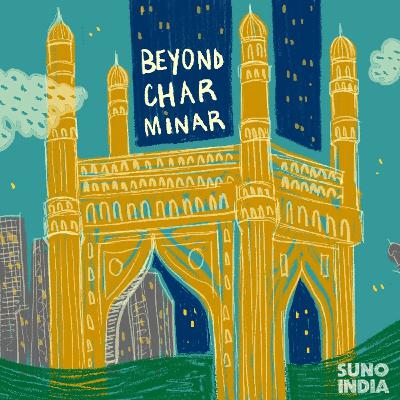
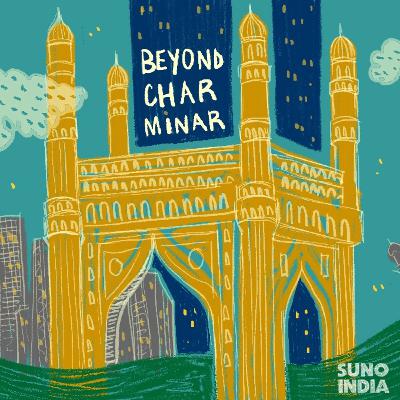
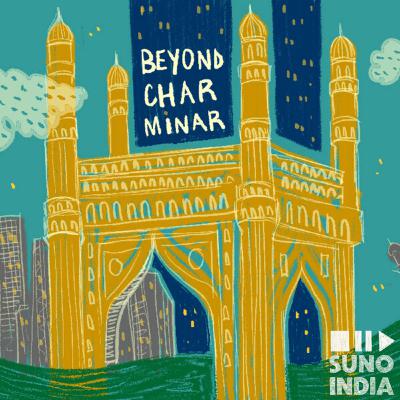
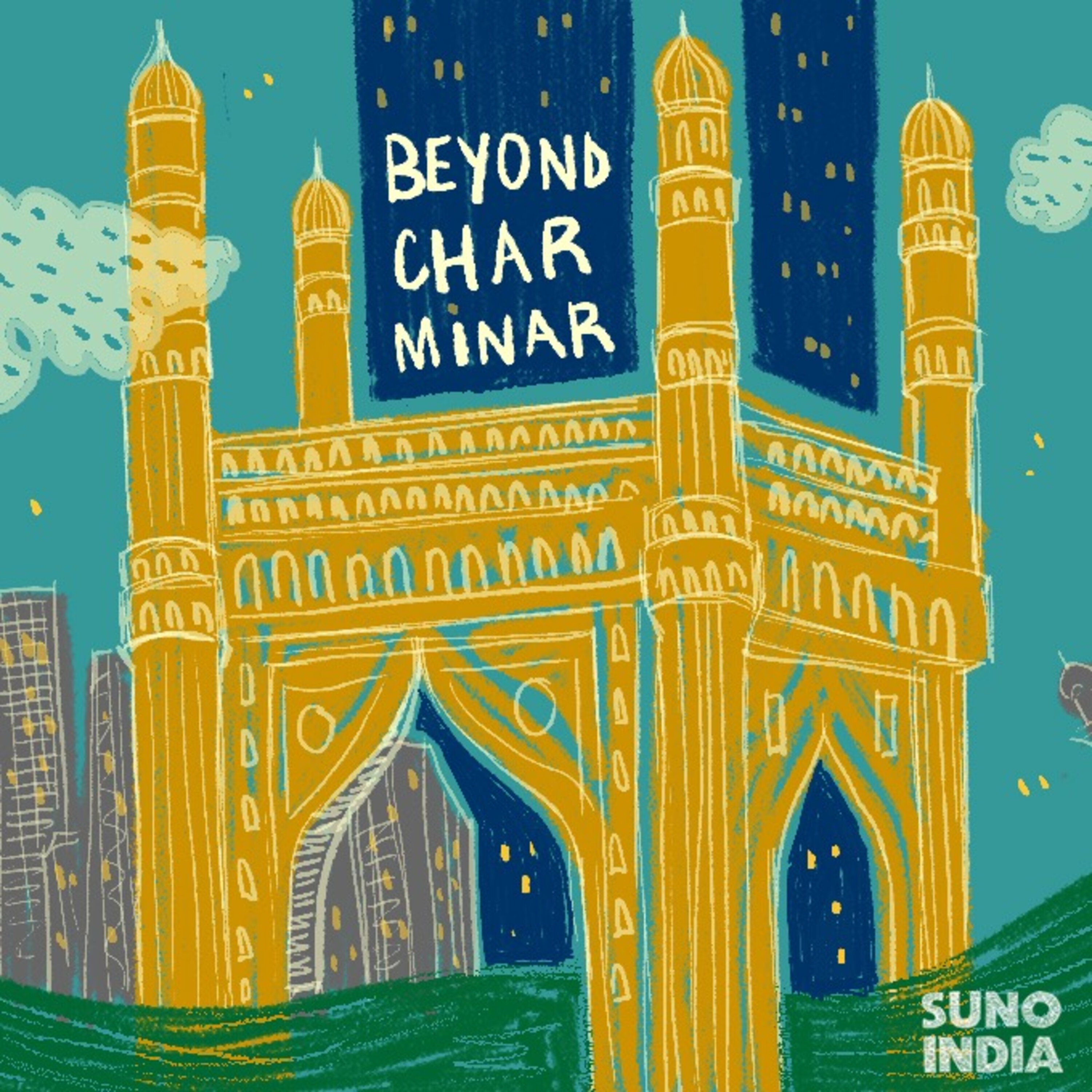
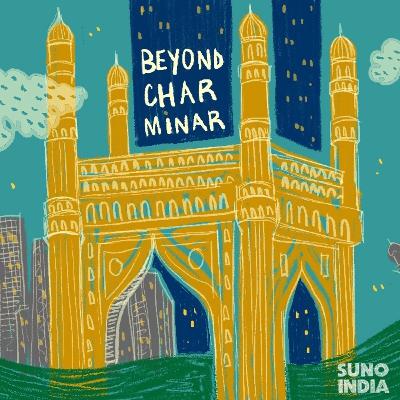

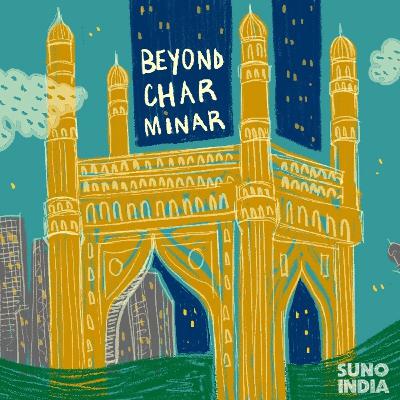



topic is good but the audio quality is not good..we barely hear,even though we put on high volume.please work on it.all the best
Can you add the transcript or provide sub titles